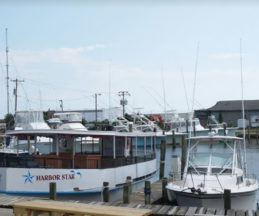Outer Banks Shark Safety Tips
Atlantic sharpnose sharks are among the most common in North Carolina / Outer Banks waters. The adults can reach 4 feet in length and are found during the summer and autumn.
Chances of encountering a shark in North Carolina waters are very low. According to statistics, the chances that a shark will attack you are one in 11.5 million. To put that into context, your chances of drowning are 1 in 3.5 million. Most shark encounters with humans are cases of mistaken identity. The reality is that sharks live in the same ocean and we swim and play in. Most encounters occur in nearshore waters, between sandbars, or near steep drop-offs where sharks feed. There are some simple tips humans can do to avoid sharks.
- Always Swim Near a Lifeguard! Rip currents and strong surf are much more common than sharks and just as dangerous.
- Do not enter the water or swim near a pier, as they attract bait fish that sharks feed on and are a very likely place for sharks to swim if they come close to shore.
- Avoid waters being used by fishermen, especially if there are signs of baitfish or feeding activity. Diving seabirds are good indicators of such action.
- Always stay in groups. Sharks are more likely to attack a solitary individual.
- Avoid being in the water during dusk, darkness or twilight hours. This is when sharks are most active and have a sensory advantage.
- Avoid wearing shiny jewelry in the water because the reflected light resembles the sheen of fish scales.
- Refrain from excess splashing to minimize your risk.
- Exercise caution when swimming between sandbars or near steep drop-offs. These are favorite hangouts for sharks.
- Do not enter the water if bleeding. A shark’s sense of smell is acute.



